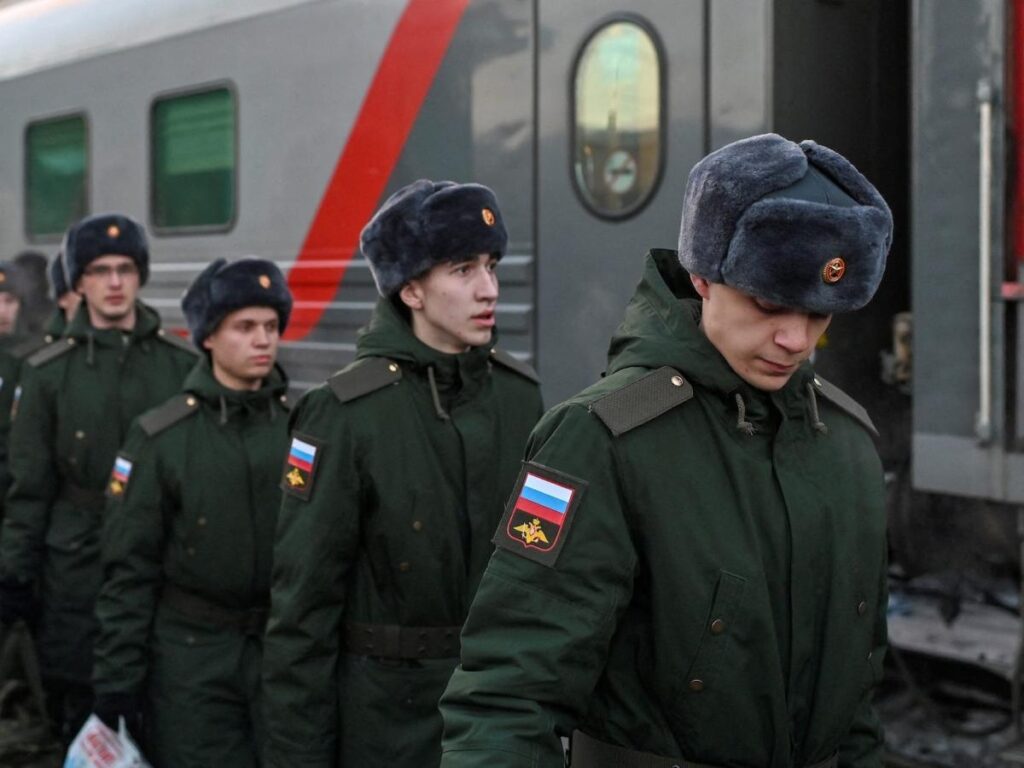-
Russia is flooding Ukraine with troops and equipment, but that should slow down soon, analyst Michael Kofman said.
-
The high losses indicate that the army is under pressure under the current level of aggression, he told the newspaper Intelligence.
-
While Kofman doesn’t think Russia will run out of steam, he said the Kremlin will be forced to recalibrate.
Russia’s numbers advantage over Ukraine will likely start to diminish as early as the end of this year, says US-based military analyst Michael Kofman.
In a conversation with Benjamin Hart of the intelligence service interview published on TuesdayKofman said that while the Kremlin has kept up the pressure on Ukraine while suffering a high degree of exhaustion, it is now beginning to struggle under “very significant constraints.”
“And if anything, his advantage on the battlefield is likely to diminish as we move into this winter and look further ahead to 2025,” said Kofman, a Kiev-born senior fellow at the Carnegie Endowment for International Peace whose work focuses on Russia.
Kofman was careful to tell Hart that he didn’t think Russia would soon run out of equipment or men. But he believes Moscow cannot maintain its offensive pace for long.
Such a development could be a ray of hope for Ukraine, which is facing a slow but brutal Russian advance in the east, largely attributed to Moscow’s spending of far more manpower and military equipment.
Russian equipment cannot last forever
Kofman’s first explanation is that Moscow has replaced the high equipment losses with Soviet era weaponsbut even these reserve supplies cannot last forever.
“Russia is eating away at its Soviet legacy, and the production rate of equipment is quite low compared to the numbers lost on the battlefield,” he said.
“What it does mean is that the Russian military is increasingly forced to adapt its tactics to minimize their losses,” he added. “And that also reduces their ability to achieve operationally meaningful breakthroughs.”
High payouts show that recruitment is under pressure
Kofman also believes that the Russian government cannot sustain the increase in bonuses and benefits it is offering en masse to new recruits.
As the country continues to try to overwhelm Ukraine by flooding the battlefield with troops, Russia is offering abnormally high payouts for new soldiers, as it did then Moscow touted sign-up bonuses similar to that of the US military in July. And that’s for a city where the average wage is less than a fifth of the average wage in the US
“It is clear that Russia’s contract recruitment campaign cannot keep pace with this rate of losses,” Kofman said. “This also does not mean that Russia will run out of manpower, but it is clear that they are struggling.”
Britain’s Ministry of Defense posted an update on Monday saying Russia is likely to have suffered the highest number of daily casualties since the start of the war, with the average size of losses rising significantly each year.
British officials estimate the Kremlin remains steadfast losing 1,000 troops per day during the coming winter, after already suffering record losses in May and September.
This comes as Russia advances forcefully on its eastern front, laying siege to Donetsk’s key cities of Vuhledar and Pokrovsk, while trying to recapture Russian land seized by Ukraine in Kursk.
Putin’s long-term strategy is under discussion
The battles in the Donbas have been an uphill battle more than a year in the case of Vuhledar.
While Russian forces have reached the borders of Pokrovsk, Kofman told Hart that it would take them more than a few weeks of fighting to capture the city.
His analysis of the Russian pace of battle has implications not only for the front line in Ukraine, but also for Russia’s war economyon which Russian leader Vladimir Putin has refocused are highly dependent on defense production after the war started.
Drafting policy documents reported by Russian media in September indicate that authorities plan to continue spending around 40% of the country’s total budget on military and national security.
Russia posted GDP growth of 3.6% in 2023 after the turnaround, despite international sanctions that the West hoped would undermine its economy. Putin and his government largely viewed these numbers as a triumphant sign of Russian resilience.
But it is unclear how long Moscow will last can maintain this strategy. Some economists say that if the war disappears or production slows, the defense sector will no longer be able to support the Russian economy. which could push it into a recession.
The supply of equipment and manpower to Ukraine is also far from assured, as the country is dependent on the West to send crucial weapons and a lagging mobilization programme which rushed to send reinforcements to the front lines after coming into effect years after the start of the war.
Kiev has now tried that developing its own formidable defense industry and has produced missiles, artillery systems and a range of land, sea and air drones.
Read the original article Business insider







